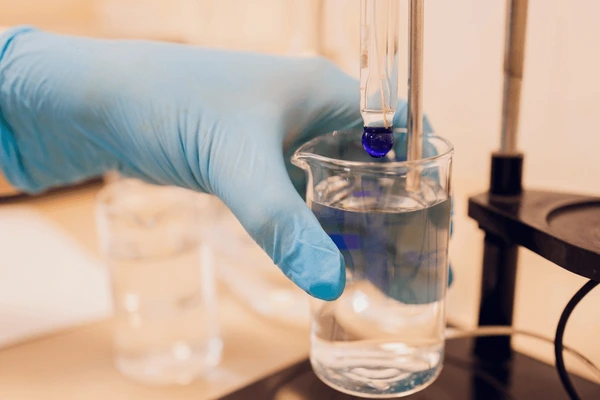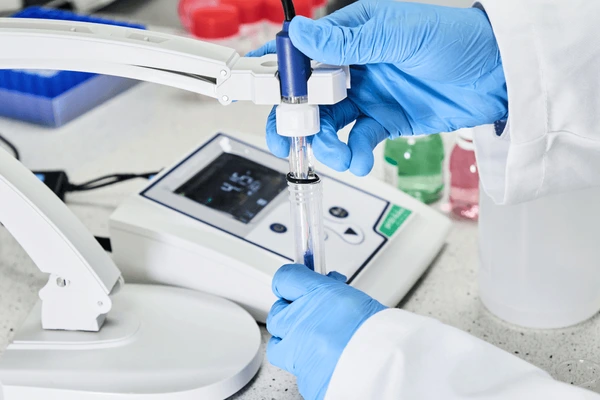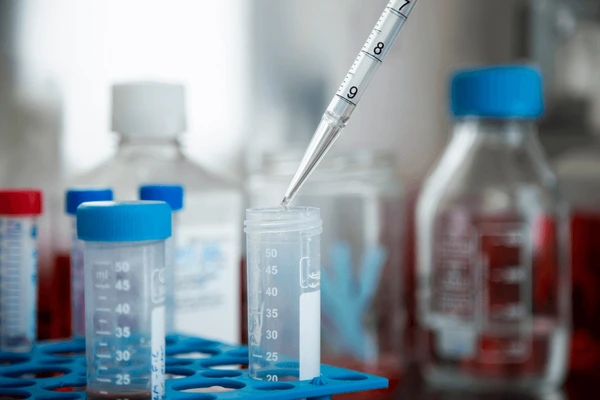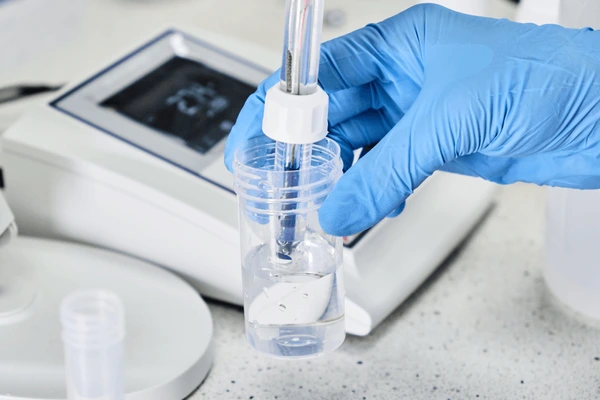In chemistry and biochemistry, buffer solutions play a crucial role in maintaining consistent pH levels. One such important buffer is the pH 9 buffer solution, valued for its alkaline nature and wide range of uses in both laboratory experiments and industrial applications. This in-depth guide examines the characteristics, preparation methods, practical applications, and significance of the pH 9 buffer solution, providing valuable insights for researchers, students, and professionals.
Understanding Buffer Solutions and Their Importance
A buffer solution is a chemical system that maintains a relatively constant pH when small amounts of acid or base are introduced. This pH stability is vital in various chemical reactions and biological processes where even slight changes can influence the outcome or functionality. Buffers achieve this by using a conjugate acid-base pair to counteract the effects of added acids or bases.
A pH 9 buffer specifically maintains the solution at a mildly alkaline level. This is particularly useful in experiments and industrial processes requiring controlled environments, such as enzyme assays, electrophoresis, and pharmaceutical preparations.
Chemical Composition of pH 9 Buffer Solution

A pH 9 buffer solution generally contains a weak base along with its conjugate acid or a combination of salts that maintain a stable pH through chemical equilibrium. The borate buffer system is the most widely used for achieving a pH of 9. It functions based on the equilibrium between boric acid (H₃BO₃) and its conjugate base, the borate ion (B(OH)₄⁻).
Key components often include:
- Sodium borate (borax, Na2B4O7·10H2O): Acts as the base.
- Boric acid (H3BO3): Provides the conjugate acid.
- Distilled water: Solvent.
The ratio of borate to boric acid is adjusted to achieve the target pH of 9, leveraging the Henderson-Hasselbalch equation for precise pH control.
Preparation of pH 9 Buffer Solution
Preparing a pH 9 buffer solution requires careful measurement and adjustment of chemical components to ensure stability and accuracy.
Materials Required:
- Sodium borate (borax)
- Boric acid
- Distilled or deionized water
- pH meter or reliable pH indicator strips
- Glassware (beakers, volumetric flasks, stirrers)
Step-by-Step Preparation:
- Dissolve borax in distilled water: Measure the desired amount of sodium borate and dissolve it thoroughly in a specific volume of distilled water.
- Add boric acid gradually: Introduce boric acid in controlled amounts, stirring continuously.
- Measure pH frequently: Use a calibrated pH meter to check the pH after each addition.
- Adjust to pH 9: Add small increments of either boric acid or borax until the solution stabilizes at pH 9.
- Make up to final volume: Once the desired pH is achieved, adjust the volume with distilled water.
- Filter and store: Filter if necessary and store the buffer in a clean, airtight container to prevent contamination.
This method ensures a reproducible and stable pH 9 buffer solution for laboratory or industrial use.
Applications of pH 9 Buffer Solution
The pH 9 buffer solution finds utility across diverse fields due to its alkaline stability and buffering capacity.
1. Biochemical and Molecular Biology Research
Many enzymatic reactions function optimally at alkaline pH levels. For instance, alkaline phosphatase assays commonly require a pH near 9 to maximize enzyme activity. Using a pH 9 buffer solution ensures reaction conditions remain consistent, yielding accurate and reproducible results.
2. Electrophoresis and Protein Analysis
Buffers at pH 9 are widely used in gel electrophoresis, especially in techniques like SDS-PAGE and isoelectric focusing. Maintaining a stable pH prevents protein denaturation or aggregation, thus preserving the integrity of samples.
3. Pharmaceutical and Cosmetic Industry

pH 9 buffers are used in formulating topical creams and lotions where an alkaline environment enhances the stability or absorption of active ingredients. Moreover, certain pharmaceutical preparations require pH-controlled environments to maintain drug efficacy.
4. Environmental and Industrial Applications
In water treatment and industrial cleaning processes, pH 9 buffers are applied to neutralize acidic waste streams or maintain alkaline conditions necessary for chemical reactions.
Advantages of Using pH 9 Buffer Solutions
- pH Stability: Resists fluctuations in pH when acids or bases are introduced.
- Reproducibility: Offers consistent experimental conditions essential for scientific accuracy.
- Wide Utility: Applicable in enzymology, analytical chemistry, pharmaceuticals, and more.
- Ease of Preparation: Uses readily available reagents with straightforward preparation methods.
Factors Affecting pH 9 Buffer Solution Performance
To maximize the effectiveness of a pH 9 buffer, it is vital to consider:
- Temperature: pH can shift slightly with temperature; calibrate and measure pH at the experimental temperature.
- Ionic Strength: High ionic strength may alter buffering capacity and pH; adjust accordingly.
- Contamination: Avoid microbial growth or chemical contamination, which can change pH.
- Storage Conditions: Use airtight containers and store at stable temperatures to maintain buffer integrity over time.
Common Mistakes When Preparing pH 9 Buffers

- Improper pH Measurement: Using uncalibrated or faulty pH meters can lead to inaccurate buffer pH.
- Incorrect Reagent Ratios: Not adjusting borate to boric acid ratios precisely can cause deviations from pH 9.
- Ignoring Temperature Effects: Neglecting to account for temperature fluctuations can cause pH drift.
- Contamination: Not using clean glassware or storage containers may introduce contaminants that destabilize the buffer.
Avoiding these pitfalls ensures the buffer remains effective and reliable.
Conclusion
A pH 9 buffer solution is an essential tool in many scientific and industrial disciplines. Its ability to maintain an alkaline environment with minimal pH fluctuation underpins critical biochemical reactions, analytical techniques, and product formulations. By understanding its chemistry, preparation methods, applications, and proper handling, we can harness the full potential of this buffer for precise and consistent results.
For anyone involved in chemistry, biology, pharmaceuticals, or environmental sciences, mastering the use of pH 9 buffer solutions is fundamental to advancing research and industrial processes.
How do you make a pH 9 buffer solution?
In chemistry and biochemistry, buffer solutions play a crucial role in maintaining consistent pH levels. One such important buffer is the pH 9 buffer solution, valued for its alkaline nature and wide range of uses in both laboratory experiments and industrial applications. This in-depth guide examines the characteristics, preparation methods, practical applications, and significance of the pH 9 buffer solution, providing valuable insights for researchers, students, and professionals.
Understanding Buffer Solutions and Their Importance
A buffer solution is a chemical system that maintains a relatively constant pH when small amounts of acid or base are introduced. This pH stability is vital in various chemical reactions and biological processes where even slight changes can influence the outcome or functionality. Buffers achieve this by using a conjugate acid-base pair to counteract the effects of added acids or bases.
A pH 9 buffer specifically maintains the solution at a mildly alkaline level. This is particularly useful in experiments and industrial processes requiring controlled environments, such as enzyme assays, electrophoresis, and pharmaceutical preparations.
Chemical Composition of pH 9 Buffer Solution
A pH 9 buffer solution generally contains a weak base along with its conjugate acid or a combination of salts that maintain a stable pH through chemical equilibrium. The borate buffer system is the most widely used for achieving a pH of 9. It functions based on the equilibrium between boric acid (H₃BO₃) and its conjugate base, the borate ion (B(OH)₄⁻).
Key components often include:
Sodium borate (borax, Na2B4O7·10H2O): Acts as the base.
Boric acid (H3BO3): Provides the conjugate acid.
Distilled water: Solvent.
The ratio of borate to boric acid is adjusted to achieve the target pH of 9, leveraging the Henderson-Hasselbalch equation for precise pH control.
Preparation of pH 9 Buffer Solution
Preparing a pH 9 buffer solution requires careful measurement and adjustment of chemical components to ensure stability and accuracy.
Materials Required:
Sodium borate (borax)
Boric acid
Distilled or deionized water
pH meter or reliable pH indicator strips
Glassware (beakers, volumetric flasks, stirrers)
Step-by-Step Preparation:
Dissolve borax in distilled water: Measure the desired amount of sodium borate and dissolve it thoroughly in a specific volume of distilled water.
Add boric acid gradually: Introduce boric acid in controlled amounts, stirring continuously.
Measure pH frequently: Use a calibrated pH meter to check the pH after each addition.
Adjust to pH 9: Add small increments of either boric acid or borax until the solution stabilizes at pH 9.
Make up to final volume: Once the desired pH is achieved, adjust the volume with distilled water.
Filter and store: Filter if necessary and store the buffer in a clean, airtight container to prevent contamination.
This method ensures a reproducible and stable pH 9 buffer solution for laboratory or industrial use.
Applications of pH 9 Buffer Solution
The pH 9 buffer solution finds utility across diverse fields due to its alkaline stability and buffering capacity.
1. Biochemical and Molecular Biology Research
Many enzymatic reactions function optimally at alkaline pH levels. For instance, alkaline phosphatase assays commonly require a pH near 9 to maximize enzyme activity. Using a pH 9 buffer solution ensures reaction conditions remain consistent, yielding accurate and reproducible results.
2. Electrophoresis and Protein Analysis
Buffers at pH 9 are widely used in gel electrophoresis, especially in techniques like SDS-PAGE and isoelectric focusing. Maintaining a stable pH prevents protein denaturation or aggregation, thus preserving the integrity of samples.
3. Pharmaceutical and Cosmetic Industry
pH 9 buffers are used in formulating topical creams and lotions where an alkaline environment enhances the stability or absorption of active ingredients. Moreover, certain pharmaceutical preparations require pH-controlled environments to maintain drug efficacy.
4. Environmental and Industrial Applications
In water treatment and industrial cleaning processes, pH 9 buffers are applied to neutralize acidic waste streams or maintain alkaline conditions necessary for chemical reactions.
Advantages of Using pH 9 Buffer Solutions
pH Stability: Resists fluctuations in pH when acids or bases are introduced.
Reproducibility: Offers consistent experimental conditions essential for scientific accuracy.
Wide Utility: Applicable in enzymology, analytical chemistry, pharmaceuticals, and more.
Ease of Preparation: Uses readily available reagents with straightforward preparation methods.
Factors Affecting pH 9 Buffer Solution Performance
To maximize the effectiveness of a pH 9 buffer, it is vital to consider:
Temperature: pH can shift slightly with temperature; calibrate and measure pH at the experimental temperature.
Ionic Strength: High ionic strength may alter buffering capacity and pH; adjust accordingly.
Contamination: Avoid microbial growth or chemical contamination, which can change pH.
Storage Conditions: Use airtight containers and store at stable temperatures to maintain buffer integrity over time.
Common Mistakes When Preparing pH 9 Buffers
Improper pH Measurement: Using uncalibrated or faulty pH meters can lead to inaccurate buffer pH.
Incorrect Reagent Ratios: Not adjusting borate to boric acid ratios precisely can cause deviations from pH 9.
Ignoring Temperature Effects: Neglecting to account for temperature fluctuations can cause pH drift.
Contamination: Not using clean glassware or storage containers may introduce contaminants that destabilize the buffer.
Avoiding these pitfalls ensures the buffer remains effective and reliable.
Conclusion
A pH 9 buffer solution is an essential tool in many scientific and industrial disciplines. Its ability to maintain an alkaline environment with minimal pH fluctuation underpins critical biochemical reactions, analytical techniques, and product formulations. By understanding its chemistry, preparation methods, applications, and proper handling, we can harness the full potential of this buffer for precise and consistent results.
For anyone involved in chemistry, biology, pharmaceuticals, or environmental sciences, mastering the use of pH 9 buffer solutions is fundamental to advancing research and industrial processes.
What is the composition of pH 9 buffer?
Preparing a pH 9 buffer solution requires careful measurement and adjustment of chemical components to ensure stability and accuracy.
Materials Required:
Sodium borate (borax)
Boric acid
Distilled or deionized water
pH meter or reliable pH indicator strips
Glassware (beakers, volumetric flasks, stirrers)
Step-by-Step Preparation:
Dissolve borax in distilled water: Measure the desired amount of sodium borate and dissolve it thoroughly in a specific volume of distilled water.
Add boric acid gradually: Introduce boric acid in controlled amounts, stirring continuously.
Measure pH frequently: Use a calibrated pH meter to check the pH after each addition.
Adjust to pH 9: Add small increments of either boric acid or borax until the solution stabilizes at pH 9.
Make up to final volume: Once the desired pH is achieved, adjust the volume with distilled water.
Filter and store: Filter if necessary and store the buffer in a clean, airtight container to prevent contamination.
This method ensures a reproducible and stable pH 9 buffer solution for laboratory or industrial use.
What is a pH 9 buffer solution?
In chemistry and biochemistry, buffer solutions play a crucial role in maintaining consistent pH levels. One such important buffer is the pH 9 buffer solution, valued for its alkaline nature and wide range of uses in both laboratory experiments and industrial applications. This in-depth guide examines the characteristics, preparation methods, practical applications, and significance of the pH 9 buffer solution, providing valuable insights for researchers, students, and professionals.
Understanding Buffer Solutions and Their Importance
A buffer solution is a chemical system that maintains a relatively constant pH when small amounts of acid or base are introduced. This pH stability is vital in various chemical reactions and biological processes where even slight changes can influence the outcome or functionality. Buffers achieve this by using a conjugate acid-base pair to counteract the effects of added acids or bases.
A pH 9 buffer specifically maintains the solution at a mildly alkaline level. This is particularly useful in experiments and industrial processes requiring controlled environments, such as enzyme assays, electrophoresis, and pharmaceutical preparations.
Chemical Composition of pH 9 Buffer Solution
A pH 9 buffer solution generally contains a weak base along with its conjugate acid or a combination of salts that maintain a stable pH through chemical equilibrium. The borate buffer system is the most widely used for achieving a pH of 9. It functions based on the equilibrium between boric acid (H₃BO₃) and its conjugate base, the borate ion (B(OH)₄⁻).
Key components often include:
Sodium borate (borax, Na2B4O7·10H2O): Acts as the base.
Boric acid (H3BO3): Provides the conjugate acid.
Distilled water: Solvent.
The ratio of borate to boric acid is adjusted to achieve the target pH of 9, leveraging the Henderson-Hasselbalch equation for precise pH control.
Preparation of pH 9 Buffer Solution
Preparing a pH 9 buffer solution requires careful measurement and adjustment of chemical components to ensure stability and accuracy.
Materials Required:
Sodium borate (borax)
Boric acid
Distilled or deionized water
pH meter or reliable pH indicator strips
Glassware (beakers, volumetric flasks, stirrers)
Step-by-Step Preparation:
Dissolve borax in distilled water: Measure the desired amount of sodium borate and dissolve it thoroughly in a specific volume of distilled water.
Add boric acid gradually: Introduce boric acid in controlled amounts, stirring continuously.
Measure pH frequently: Use a calibrated pH meter to check the pH after each addition.
Adjust to pH 9: Add small increments of either boric acid or borax until the solution stabilizes at pH 9.
Make up to final volume: Once the desired pH is achieved, adjust the volume with distilled water.
Filter and store: Filter if necessary and store the buffer in a clean, airtight container to prevent contamination.
This method ensures a reproducible and stable pH 9 buffer solution for laboratory or industrial use.
Applications of pH 9 Buffer Solution
The pH 9 buffer solution finds utility across diverse fields due to its alkaline stability and buffering capacity.
1. Biochemical and Molecular Biology Research
Many enzymatic reactions function optimally at alkaline pH levels. For instance, alkaline phosphatase assays commonly require a pH near 9 to maximize enzyme activity. Using a pH 9 buffer solution ensures reaction conditions remain consistent, yielding accurate and reproducible results.
2. Electrophoresis and Protein Analysis
Buffers at pH 9 are widely used in gel electrophoresis, especially in techniques like SDS-PAGE and isoelectric focusing. Maintaining a stable pH prevents protein denaturation or aggregation, thus preserving the integrity of samples.
3. Pharmaceutical and Cosmetic Industry
pH 9 buffers are used in formulating topical creams and lotions where an alkaline environment enhances the stability or absorption of active ingredients. Moreover, certain pharmaceutical preparations require pH-controlled environments to maintain drug efficacy.
4. Environmental and Industrial Applications
In water treatment and industrial cleaning processes, pH 9 buffers are applied to neutralize acidic waste streams or maintain alkaline conditions necessary for chemical reactions.
Advantages of Using pH 9 Buffer Solutions
pH Stability: Resists fluctuations in pH when acids or bases are introduced.
Reproducibility: Offers consistent experimental conditions essential for scientific accuracy.
Wide Utility: Applicable in enzymology, analytical chemistry, pharmaceuticals, and more.
Ease of Preparation: Uses readily available reagents with straightforward preparation methods.
Factors Affecting pH 9 Buffer Solution Performance
To maximize the effectiveness of a pH 9 buffer, it is vital to consider:
Temperature: pH can shift slightly with temperature; calibrate and measure pH at the experimental temperature.
Ionic Strength: High ionic strength may alter buffering capacity and pH; adjust accordingly.
Contamination: Avoid microbial growth or chemical contamination, which can change pH.
Storage Conditions: Use airtight containers and store at stable temperatures to maintain buffer integrity over time.
Common Mistakes When Preparing pH 9 Buffers
Improper pH Measurement: Using uncalibrated or faulty pH meters can lead to inaccurate buffer pH.
Incorrect Reagent Ratios: Not adjusting borate to boric acid ratios precisely can cause deviations from pH 9.
Ignoring Temperature Effects: Neglecting to account for temperature fluctuations can cause pH drift.
Contamination: Not using clean glassware or storage containers may introduce contaminants that destabilize the buffer.
Avoiding these pitfalls ensures the buffer remains effective and reliable.
Conclusion
A pH 9 buffer solution is an essential tool in many scientific and industrial disciplines. Its ability to maintain an alkaline environment with minimal pH fluctuation underpins critical biochemical reactions, analytical techniques, and product formulations. By understanding its chemistry, preparation methods, applications, and proper handling, we can harness the full potential of this buffer for precise and consistent results.
For anyone involved in chemistry, biology, pharmaceuticals, or environmental sciences, mastering the use of pH 9 buffer solutions is fundamental to advancing research and industrial processes.
